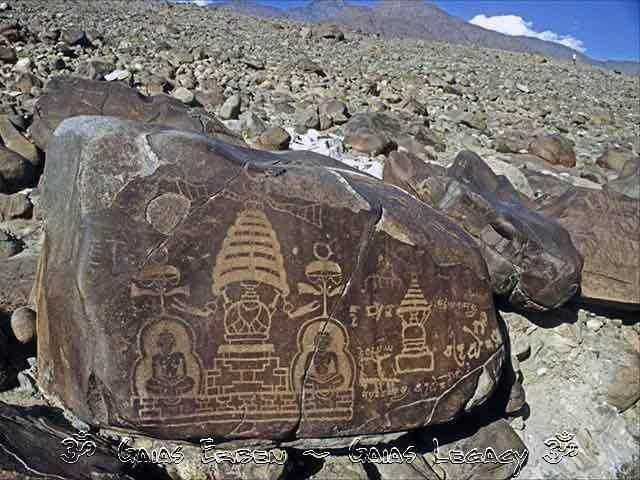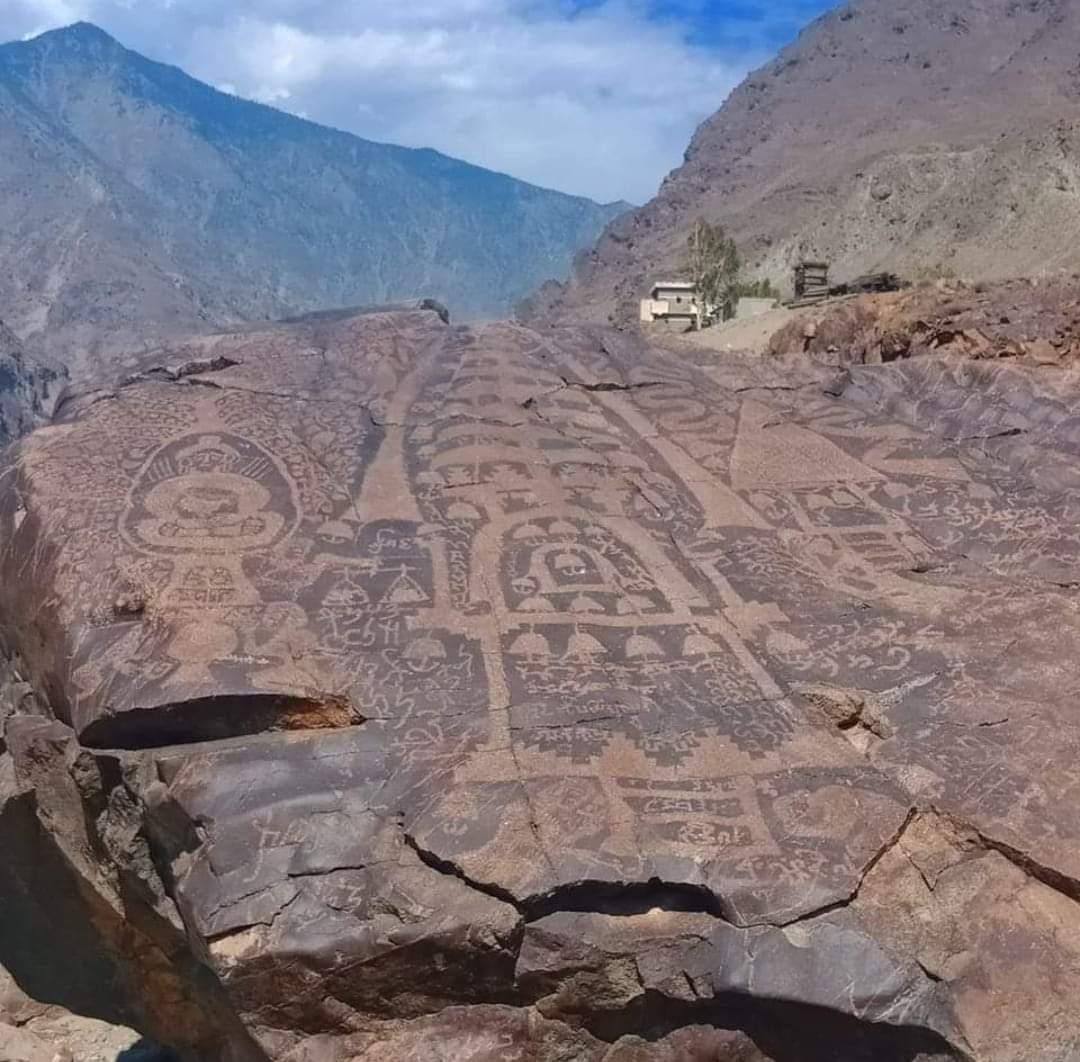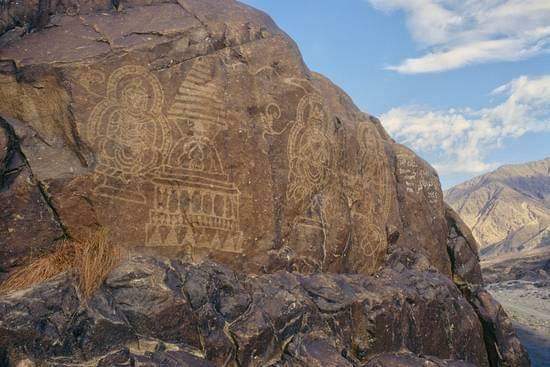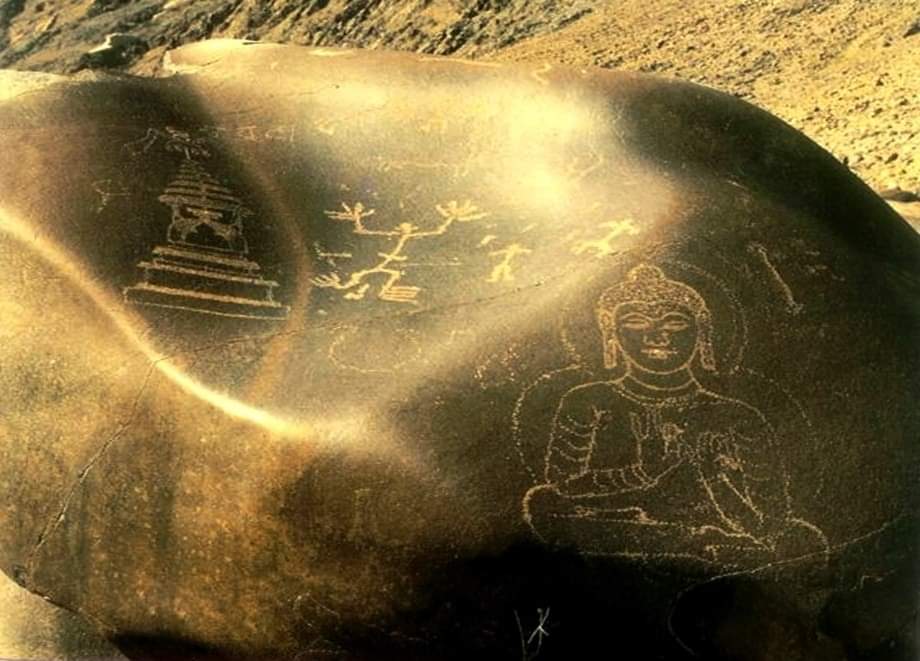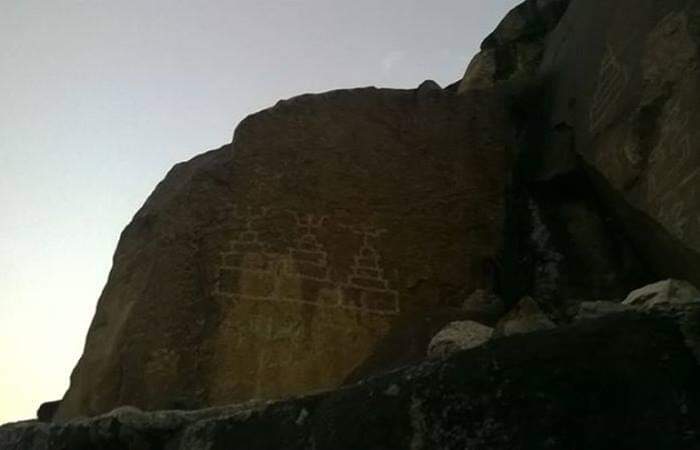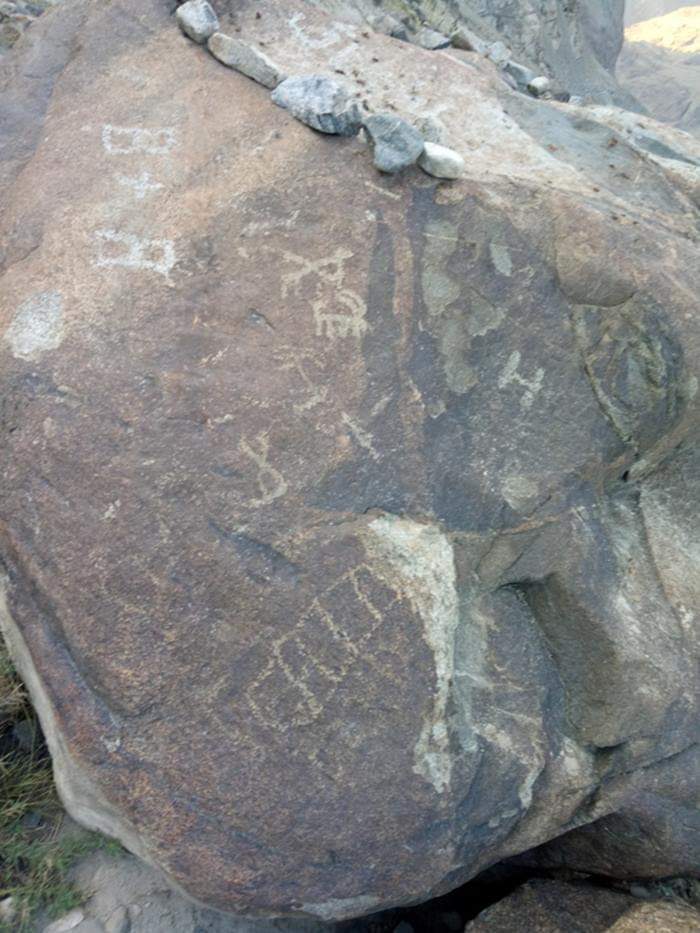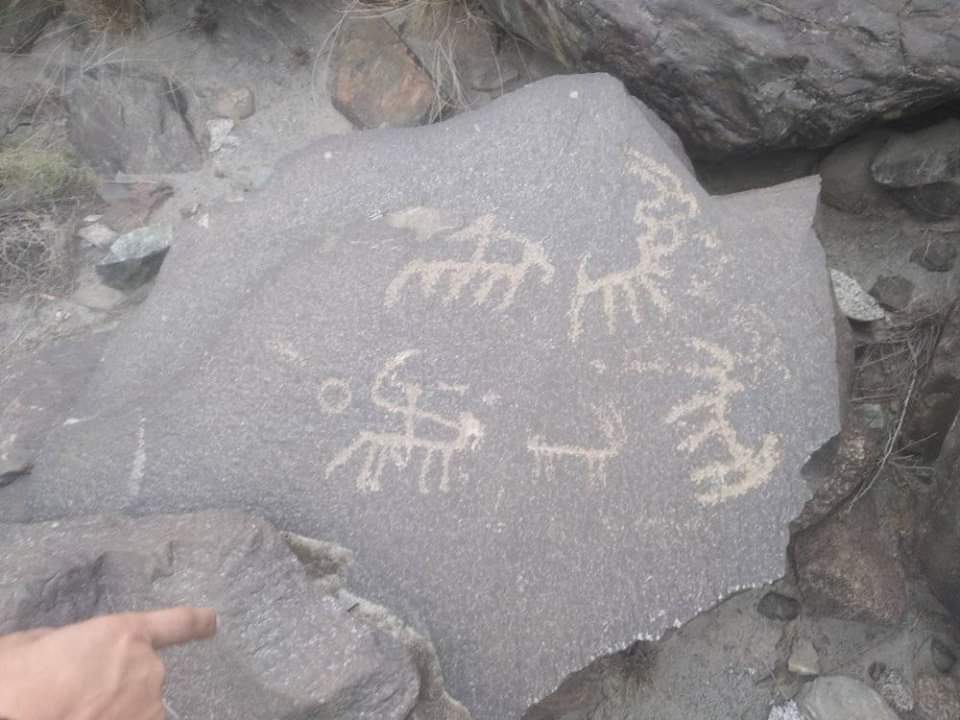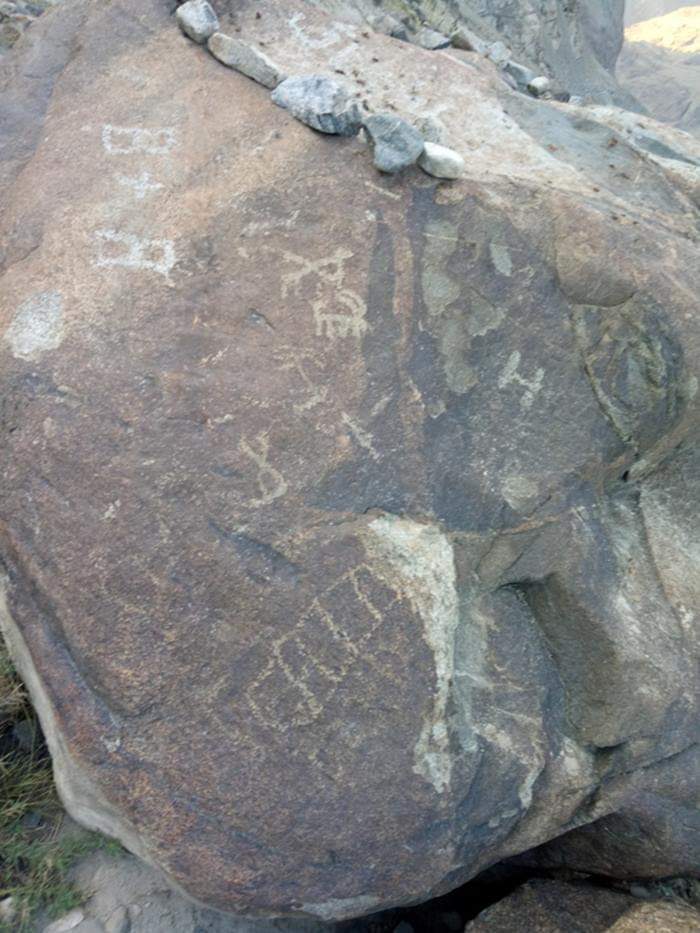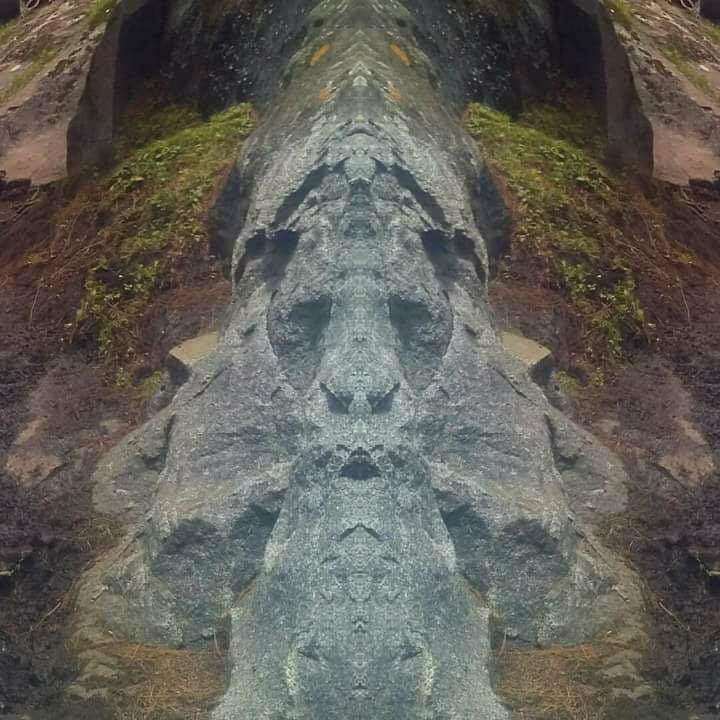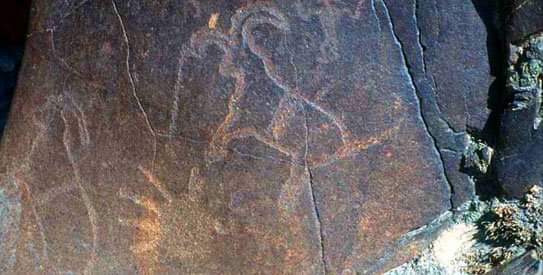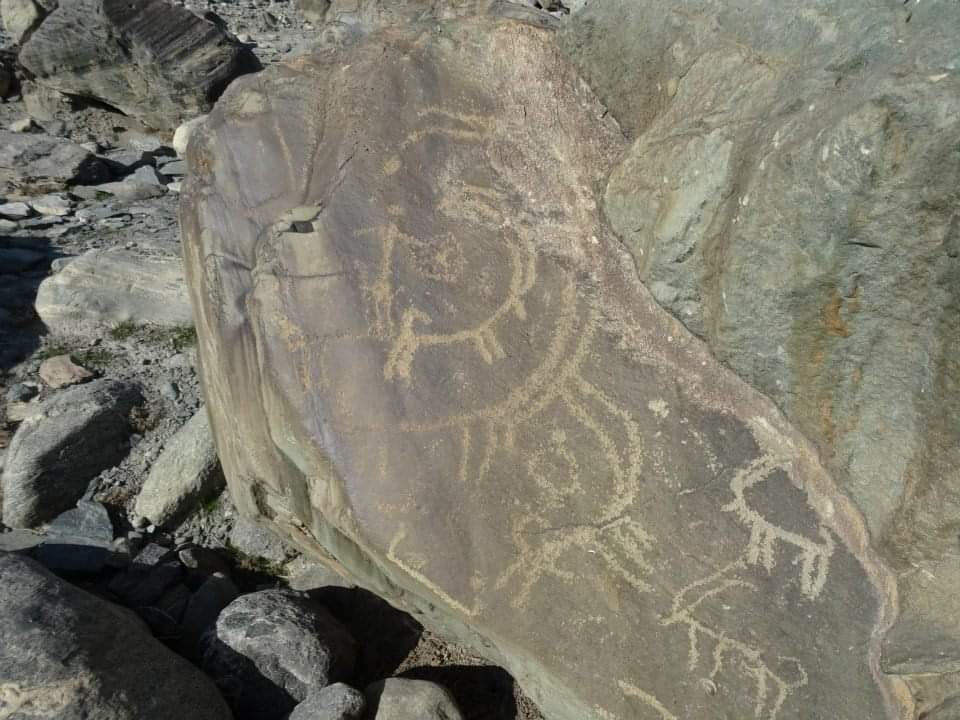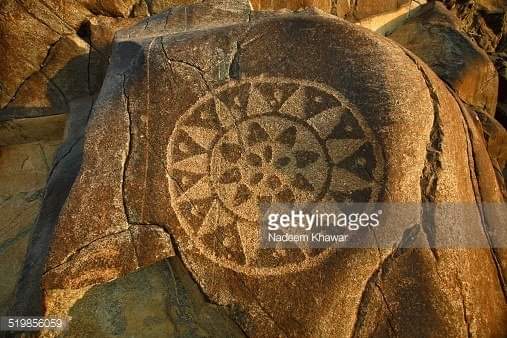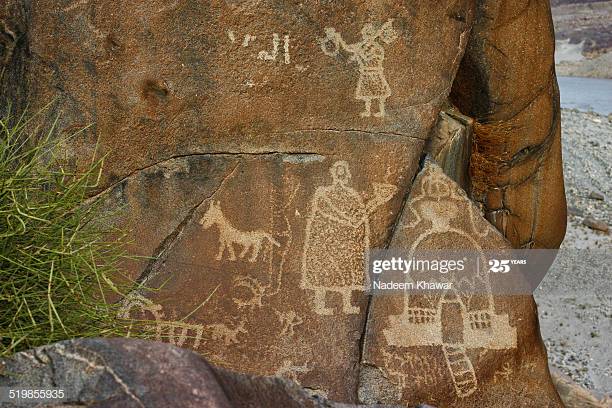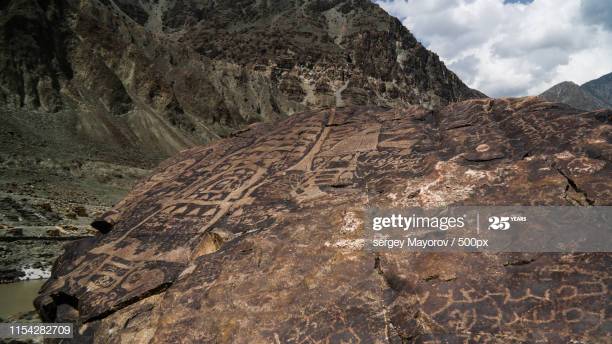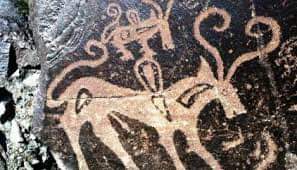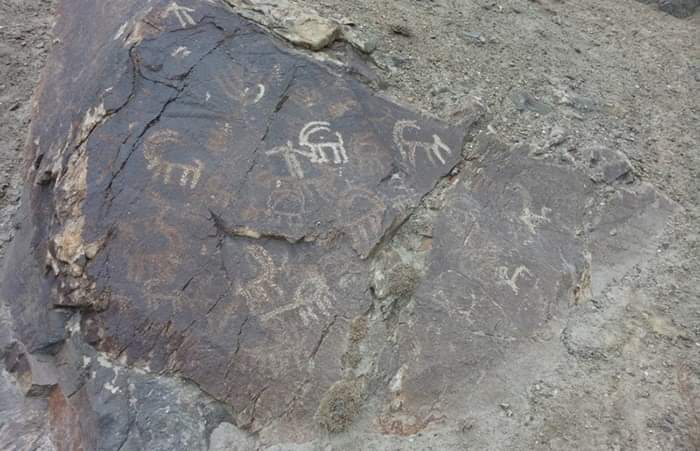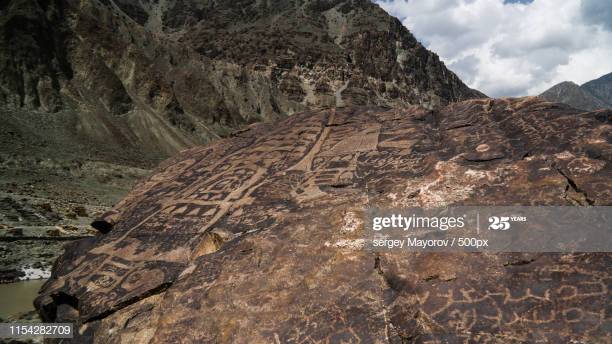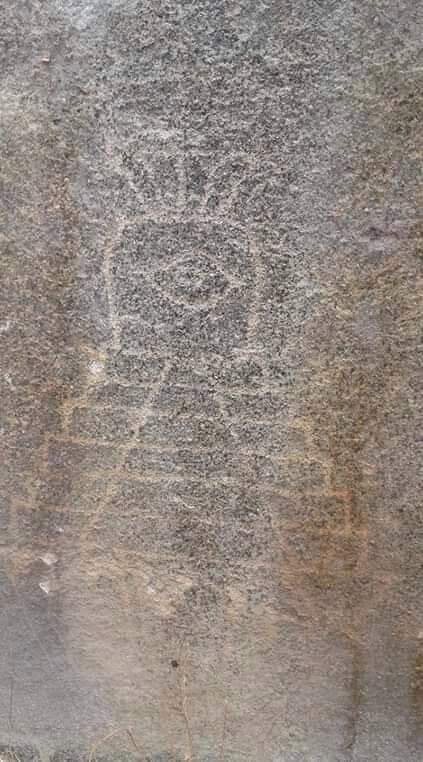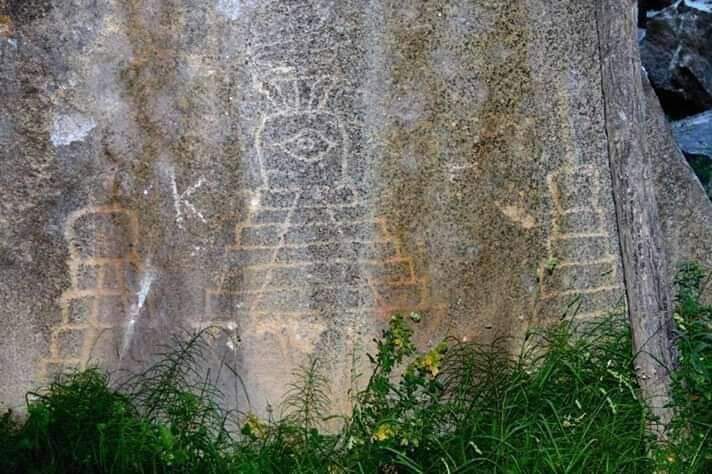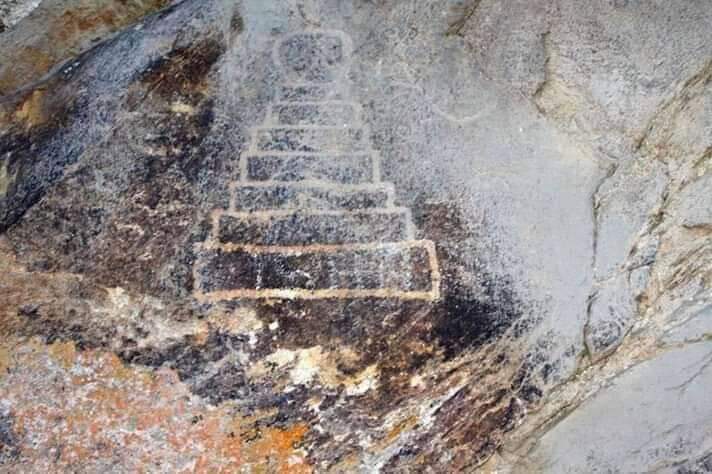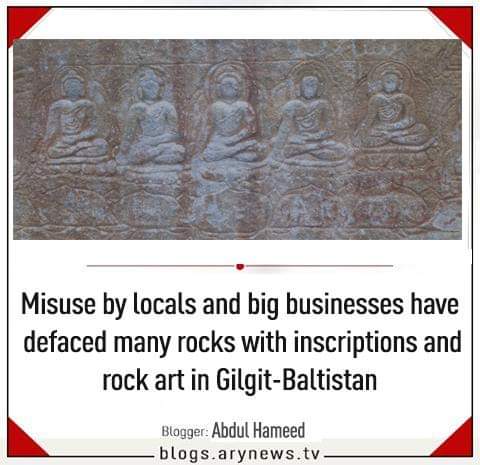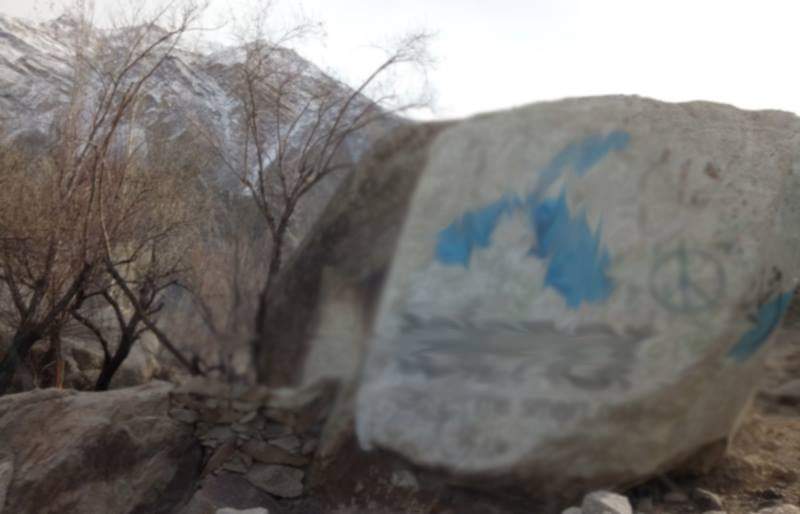The art of rock carving is present in all regions of Gilgit Baltistan, mainly in the districts of Diamir, Hunza & Nagar and Baltistan in Pakistan. Speaking specifically of Baltistan, these engravings can be seen on former settlements and popular old routes along the Indus
and Shyok. Dr. Ahmad Hasan Dani has classified these rock engravings into four categories. The oldest category includes rock carvings dating from at least two millennia BC and even dating back to the fifth or sixth millennium BC. The inhabitants were hunter-gatherers
who knew how to make stone tools (arrowhead) and most probably they hunted in groups. (The rock engravings show a bow, an arrow and a group of hunters hunting). After these, the second group includes images of demigods, herders and communities and shepherds, probably nomads
belonging to two or three millennia BCE. The third group includes engravings prior to Kushan, mainly in the Chilas region, and shows images of stupas and anthropomorphic figures. Finally, the fourth group includes stupas, temples, phallus symbols, circles and
squares and horse riders. Although most of the ancient works of art were performed by artists as an expression of their cultural and social lifestyle, very little was related to religious feelings. However, engravings of more recent ages bore Buddhist religious
inscriptions which were destroyed during the conversion of the local population to Islam in the 14th and 15th centuries AD. Even today, these inscriptions are easy to find in the villages located mainly on the east bank of the Indus, but they are in a state of disrepair.
Unplanned development activities, commercial painting practices, chalk on the walls, hatred of local people for these pre-Islamic sculptures and apathy from government departments led to the rapid disappearance of these historic rock art.
#Petroglyphs #RockArt #GilgitBaltistan
#Petroglyphs #RockArt #GilgitBaltistan

 Read on Twitter
Read on Twitter